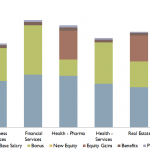Capital Structure on Valuation by Guillermo L Dumrauf :: SSRN
Content

A common example of this is when a business takes out a loan from a bank to purchase high value assets such as cars, buildings, machinery, equipment, etc. Businesses will sometimes avail of debt to finance their operations. C(Rcountry − Rf) also could be the equity premium for well-diversified US or global equity indices if the degree of local segmentation is believed to be small. HBR Learning’s online leadership training helps you hone your skills with courses like Finance Essentials. For a discussion of the determinants of share prices, see Thomas R. Piper and William E. Fruhan, Jr., “Is Your Stock Worth Its Market Price? For an excellent discussion of the need to develop a comprehensive financial and operating plan to meet sudden adversity, see Gordon Donaldson, “Strategy for Financial Emergencies,” HBR November–December 1969, p. 67. Funds available for consumption after payment of all taxes 4 EBIT (1 – Tc) (1 – Tpe).
Sinclair Broadcast’s Diamond Sports misses debt payment, setting … – Baltimore Sun
Sinclair Broadcast’s Diamond Sports misses debt payment, setting ….
Posted: Wed, 15 Feb 2023 15:05:56 GMT [source]
One limitation of book value per Book Value of Debt is that, in and of itself, it doesn’t tell you much as an investor. Investors must compare the BVPS to the market price of the stock to begin to analyze how it impacts them. Comparing BVPS to the market price of a stock is known as the market-to-book ratio, or the price-to-book ratio. Can always be calculated from information provided in a company’s income statement. Is calculated by dividing book value of secured liabilities by book value of pledged assets.
The debt-to-equity ratio: a. Is calculated by dividing book value of secured liabilities by book…
BVPS is a method for calculating a company’s BVPS based on common shareholders’ equity. Because the market considers the company’s intangible assets, such as intellectual property, the stock could be trading significantly higher than its BV. While the value of an asset may remain constant over time due to accounting calculations, the BV of a company as a whole might increase due to the accumulation of earnings created through asset utilization. When it comes to calculating the market value of debt, it is important first to ascertain debt that is not traded in the market. The next step involves determining the total amount of debt that is paid in interest on a yearly basis.

When evaluating the market price of debt, it’s important to take all of the above factors into consideration. Notes payable, are the written promissory notes which do not earn interest.
Factors Influencing Market Value of Debt
As a result, the https://personal-accounting.org/ value, which takes all of these factors into account, will normally be higher. StockMaster is here to help you understand investing and personal finance, so you can learn how to invest, start a business, and make money online. The process will be repeated for each year until the end of the forecast , with the assumption of an additional $10mm stock-based compensation consistent for each year. Next, the beginning balance for the next period will be linked to the ending balance of the prior period .
- One limitation of book value per share is that, in and of itself, it doesn’t tell you much as an investor.
- The current portion of long-term debt refers to the amount that the business has to pay within the current period.
- While the book value of an asset may stay the same over time by accounting measurements, the book value of a company collectively can grow from the accumulation of earnings generated through asset use.
- Book value of debt, on the other hand, values a company’s debt at its historical cost.
In the United States, the FINRA TRACE database also is an excellent source of interest rate information. A decade of high inflation has trapped many chief financial officers between severe financing needs and weakened balance sheets. The overall deterioration in corporate financial health has been stunning . Hard-pressed during the 1970s to supply inflation-mandated additions to working capital and to meet the increased cost of new plant and equipment, CFOs leveraged every new dollar of equity with some 3½ dollars of debt. Having piled so much new debt onto their balance sheets, they now face sharply higher interest payments as a percent of pre-tax profits.
